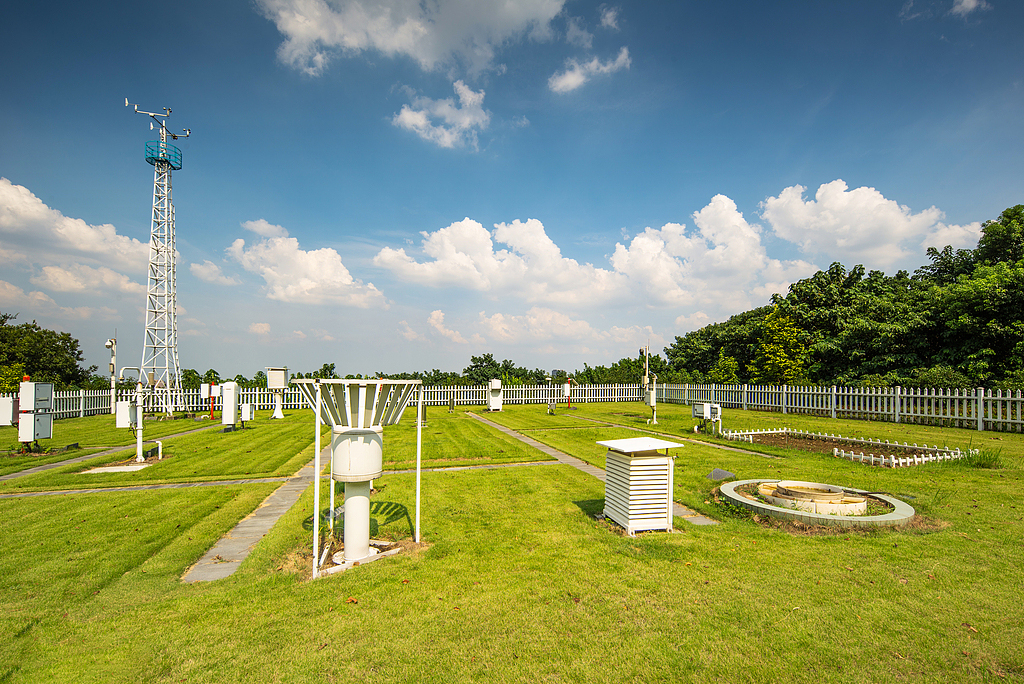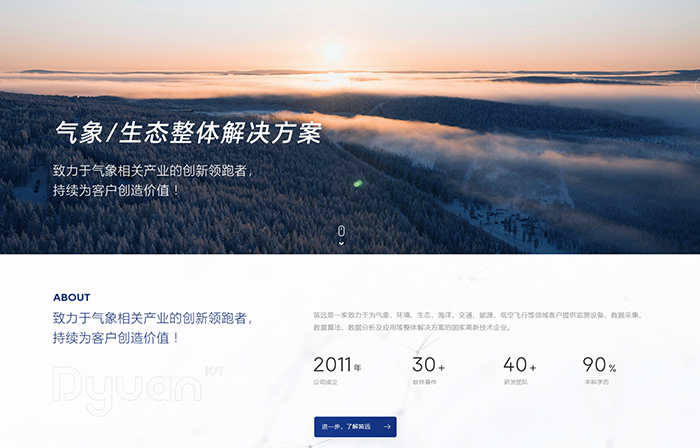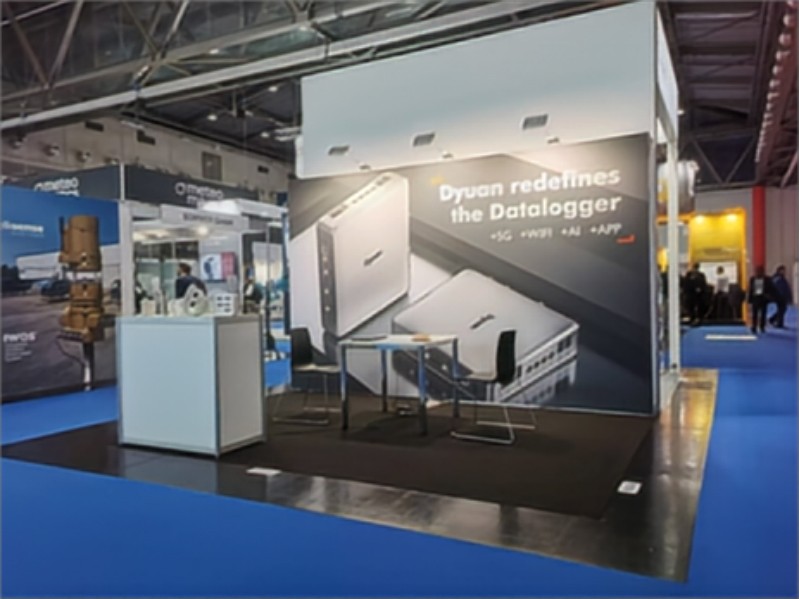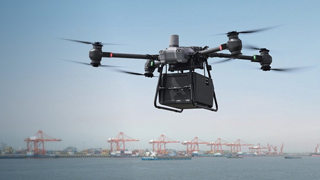Recommended software and hardware configuration for provincial conventional meteorological observation stations
1、 Introduction to Provincial Meteorological Observation Stations
Provincial regular meteorological observation stations (formerly known as "regional automatic meteorological stations", hereinafter referred to as "provincial regular stations") are meteorological observation stations that are encrypted and constructed in a representative region according to the monitoring, early warning and forecasting services of small-scale catastrophic weather and the needs of local economic and social development. Provincial regular stations use automatic observation of basic meteorological elements such as precipitation, wind direction, wind speed, temperature, humidity, and air pressure as a means to provide regional high spatiotemporal resolution observation data on small-scale catastrophic weather, local environment, and regional climate. They are an important supplement to national meteorological observation stations.
System technical features:
Reliable operation in various harsh outdoor environments, low power consumption, high stability, high precision, and can be unmanned. Adopting industrial grade design standards, it can operate stably in a wide temperature range of -50 ℃~+50 ℃ and support unmanned mode.
Complete lightning protection, anti-interference and other protective measures. Build a three-level lightning protection system: direct lightning protection (lightning arrester), power system protection (multi-level surge protection), and signal system protection (isolated transmitter). Through EMC electromagnetic compatibility certification, the anti-interference ability meets the IEC 61000-4 standard.
Both hardware and software adopt a modular open design, and meteorological sensors can be selected and flexibly combined according to needs. Adopting an open hardware platform, supporting multiple communication protocols such as RS485/Modbus, 4G/5G/WiFi, etc. The standardized design of sensor interfaces allows for flexible expansion of more than 20 observation elements such as visibility, radiation, and soil parameters.
The entire observation station system is intelligently managed, with built-in intelligent diagnostic modules that monitor equipment status and data quality in real-time. Support remote parameter configuration, firmware upgrade, and fault reset to achieve full lifecycle digital management. The power system can be optionally selected according to needs.
Dual redundant system of solar energy and lithium battery (50W solar panel+40Ah lithium battery) power supplysystem Figure 1 Functional diagram of provincial conventional station system
2、 Working principle of provincial meteorological observation stations The basic principle of provincial conventional stations is that sensors convert changes in corresponding meteorological elements into corresponding changes in electrical signals. These changes are collected by a data collector controlled by a microcontroller, linearized and calibrated to achieve the conversion of engineering quantity to element quantity, and quality control of the data. After preprocessing, real-time values of various meteorological elements are obtained and then transmitted to the microcomputer at the central station through the communication module.
Meteorological sensors use standardized interfaces to convert analog signals such as temperature, humidity, wind speed, direction, and air pressure into electrical signals. For example, a tipping bucket rain gauge quantifies precipitation through the number of mechanical flips, a platinum resistance temperature sensor reflects temperature changes through changes in resistance, and a capacitive humidity sensor measures relative humidity through changes in dielectric constant. Ultrasonic wind sensors are based on the principle of ultrasonic time difference method to simultaneously measure wind speed and direction. The silicon capacitive pressure sensor is a high-precision pressure sensor, and the sensitive element adopts a silicon capacitive absolute pressure sensor, which has good long-term stability.
The data acquisition unit controlled by an embedded microprocessor processes raw signals, using the Ruixin Micro RK3568, a 4-core 2.0GHz 64 bit processor as the core, standard running memory of DDR2GB, and hard disk capacity of 16GB EMMC NAND chip, which can be expanded to a maximum of 128GB. Built in watchdog and RTC timing. Following the "QX/T 524-2022 Automatic Weather Station Communication Protocol", data encapsulation adopts JSON format, and the transmission rate supports 1-60 minutes adjustable. With its rich and diverse data interfaces and various built-in data transmission methods (4G/5G, WiFi&Bluetooth *, USB, Can, Debug), it is possible to quickly build ground meteorological observation systems. A customizable and remote data processing program that is suitable for almost all brands of sensors in the world. Based on the supporting cloud platform, customized data processing, data interaction, remote device diagnosis, configuration, upgrade and other functions can be quickly implemented according to user needs. This device will greatly facilitate users to set up and edit various programs according to their own needs, and is very easy to operate without any programming foundation or secondary development costs. At the same time, it will improve the efficiency of equipment maintenance and management, greatly reducing the cost of later maintenance.
The 360 integrated monitoring platform adopts advanced sensing technology and cloud architecture mode to collect meteorological and environmental data such as temperature and humidity, atmospheric pressure, wind speed and direction, rain and snow rainfall, PM2.5/PM10 air quality, etc. It is connected to the cloud through wired or wireless GPRS to achieve automatic storage and online analysis and monitoring of meteorological and environmental data. Users can access cloud services for meteorological, environmental, and other data information within the environmental area by logging into the system through PC or mobile devices.
2、 Hardware composition of provincial meteorological observation stations Provincial conventional stations are mainly composed of collectors, sensors, system power supplies, online monitoring and management systems, and peripheral devices.
Figure 2 Hardware composition diagram of provincial conventional stations
1. Collection box ①
The chassis material is corrosion-resistant, resistant to infrared radiation, chemical substances, and atmospheric erosion. Its surface is coated with metal anti radiation spray to prevent solar radiation and settling substances (ice, tree branches) in white. The casing is sealed, dustproof, and waterproof. The enclosure door is opened to the right at an angle of 190 degrees, and the seal is made of forged polyurethane foam gasket. At the same time, the BOX chassis is equipped with pressure compensation components to compensate for pressure differences caused by temperature differences. This type of thin film component, combined with high-quality plastic material, effectively prevents the condensation of water vapor inside the casing.
All sensors, power supplies, and communication devices are connected to the equipment through sealed interfaces inside the machine. Each joint is labeled.
The collection box contains: data collector, power adapter, battery charging module, signal lightning protection module, AC power lightning protection module hub and other module units.
The data collector is the core of the provincial conventional station, and its main functions are data sampling, data processing, data storage, and data transmission. The data storage can store at least 30 days of hourly air pressure, temperature, relative humidity, 1-minute average wind direction and speed, and precipitation.
Figure 3: Dyuan Data Collector DYC-700
2. Sensors
A device or apparatus that converts changes in measured meteorological elements into usable output signals according to certain rules, usually consisting of sensitive components and converters.
The commonly used sensors for provincial regular stations are:
Wind Direction ② - Single Wing Wind Direction Sensor
Wind speed ② - Wind cup wind speed sensor
Integrated Wind Direction and Speed ③ - Intelligent Ultrasonic Wind Sensor
Pressure ④ - Intelligent pressure measuring instrument
Temperature ⑤ - Platinum resistance temperature sensor
Humidity ⑤ - Thin film capacitive humidity sensor
Rainfall ⑥ - tipping bucket rain sensor
Visibility ⑦ - Visibility Sensor
3. Measurement parameters of provincial conventional stations
The parameters measured by provincial conventional stations are as follows:
Elements | Range | Resolution | Accucracy |
Temperature | -50~+50℃ | 0.1℃ | ±0.2℃ |
Wind direction | 0~360° | 3° | 5° |
Wind speed | 0~75 m/s | 0.1m/s | ±(0.5+0.03V) m/s |
Rainfall | 0~999.9 mm | 0.1 mm | <10mm:0.4mm |
≥10mm:4% | |||
Relative humidity | 0~100% | 1% | ±4% (<80%Time) |
±8% (≥80%Time) | |||
Air pressure | 550~1100hpa | 0.1hpa | ±0.3 hpa |
4、 Composition of software system for provincial meteorological observation stations
A: Platform Overview
This platform focuses on meteorological monitoring, integrates environmental element perception capabilities, and constructs a comprehensive monitoring system for all element data collection, intelligent analysis, and collaborative early warning. Realize data access and cloud aggregation of multiple types of meteorological sensors (temperature and humidity, air pressure, wind speed and direction, rainfall, PM2.5/PM10, etc.) through wired/wireless communication networks, support PC and mobile multi terminal access, and provide real-time data services for meteorological warning, environmental governance, and scientific decision-making.
B: Core functional modules
▶ real time monitoring system
Multi dimensional data display: dynamically presenting real-time values of core meteorological elements such as temperature and humidity, air pressure, wind speed and direction, rainfall, etc. at the station
Intelligent warning management: supports multi-mode warnings such as threshold alarm and change rate alarm, and provides three-level push notifications through SMS/email/APP
Data video linkage: integrating on-site monitoring cameras to achieve intelligent correlation between abnormal data and video images
▶ data analysis module
Spatiotemporal data analysis: Provide statistical charts and graphs of data at multiple time scales such as hours, days, and months
Pollution diffusion assessment: Built in meteorological pollution coupling analysis model, supporting AQI trend prediction
Data quality monitoring: Automatically generate data validity reports and support traceability of abnormal data
▶ equipment management system
Full lifecycle management: real-time monitoring of equipment status, fault diagnosis, spare parts inventory management
Remote operation and maintenance support: remote parameter configuration, firmware upgrade, batch device operation
Intelligent Inspection Planning: Suggestions for Active Maintenance Strategies Based on Equipment Status
▶ Mobile Application System
Business Mobility: Supports real-time data viewing, alert confirmation, and emergency response on mobile devices Equipment control: remote start stop of equipment, parameter adjustment and other operations Process visualization: task progress tracking, real-time update of work order processing status Figure 4 Provincial Meteorological Observation Station Software System
5、 Basic Requirements for Provincial Conventional Station Construction 1. The site selection should have regional representativeness, representing the average meteorological conditions within a certain range around the observation point, ensuring that the observation data meets the requirements of representativeness and accuracy, and maintaining the stability of the site.
2. The surrounding area of the observation station should be open and flat, avoiding places such as mountain valleys and steep walls that affect the representativeness of the data area or interfere with the accuracy of the observation data.
3. There are no sources of influence within a 10 meter range of the observation instrument (such as air conditioning units, mobile communication base stations), and the top is unobstructed, ventilated, and not shaded; There are no obstructions (such as structures, walls, trees, etc.) within a range of 20m that are 1m or more above the observation platform; There are no obstructions or obstacles higher than the instrument at the top of the wind pole within a range of 50m; It is preferable to have no large buildings or mountains within a range of 100m.
4. The size of the ground station site is generally not less than 3m x 3m, and the size of the building station site is generally not less than 2m x 2m.
5. Provide mains power access, with a total power of ≤ 20W for provincial conventional station equipment, and power supply using complementary solar energy from mains power.
6. Meteorological observation stations generally require installation on the ground (10-12m wind poles). For those in large cities where ground installation is not possible due to limited detection environments, installation on rooftops that meet the above site selection requirements (3m~6m wind poles) can be chosen.
6、 Conclusion:
The construction of provincial-level meteorological stations includes professional services throughout the entire process, including: building a scientific monitoring network during the planning stage, optimizing regional observation layout, and enhancing the ability to warn of small and medium-sized disasters; The site selection for website construction follows strict environmental standards to ensure data representativeness and long-term stability; Meteorological products adopt modular design, supporting high-precision monitoring of basic elements such as temperature and humidity, wind speed and direction, as well as extended parameters such as visibility and radiation; The software system realizes real-time collection, intelligent analysis, and multi terminal visualization of all factor data, supporting business decisions such as meteorological warning and pollution prediction; The operation and maintenance support system achieves efficient management of the entire lifecycle of equipment through remote diagnosis, automatic alarm, and intelligent inspection, ensuring stable system operation and ultimately forming a closed-loop capability of "monitoring analysis warning service", providing reliable support for disaster prevention and mitigation, climate research, and regional sustainable development.
More News

Recommended software and hardware configuration for provincial conventional meteorological observation stations
2025.03.28

The official website of Dyuan Technology has been launched, opening a new chapter in intelligent monitoring services
2025.03.25

Dyuan Technology shines at the International Meteorological Exhibition, Innovative products lead new changes in the industry
2025.03.25

Dyuan shines brightly at the Asia Pacific International Meteorological and Hydrological Exhibition, attracting attention with innovative solutions and products
2025.03.25




